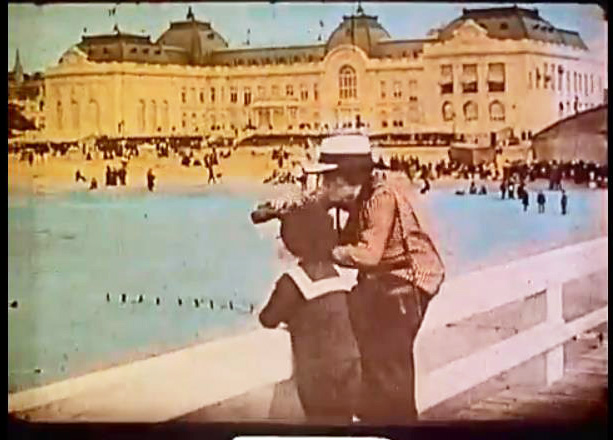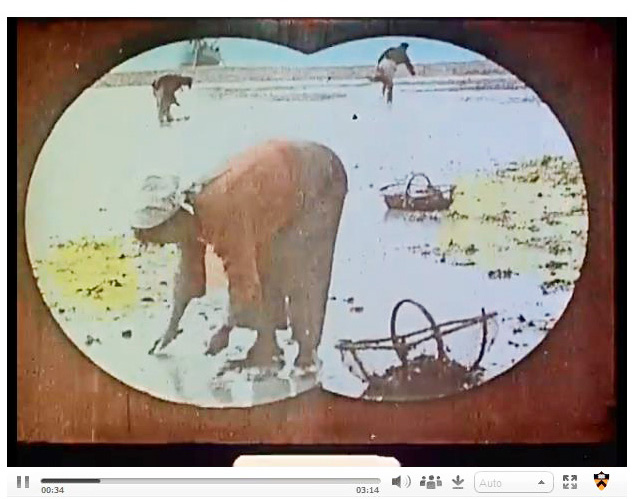 Princeton University Library’s collection of 1920s French silence movies for Pathé home movie projectors are primarily black and white. A select few have been hand colored using stencils, also called pochoir coloring. A good example is this documentary about the beach at Trouville. https://rbsc.princeton.edu/pathebaby/node/2472
Princeton University Library’s collection of 1920s French silence movies for Pathé home movie projectors are primarily black and white. A select few have been hand colored using stencils, also called pochoir coloring. A good example is this documentary about the beach at Trouville. https://rbsc.princeton.edu/pathebaby/node/2472

Here is a translation of the film titles:
Trouville, the queen of beaches. The beach of Trouville, with fine and uniform sand, is overlooked by a large terrace on which stands a casino. In the mirror-like puddles left by the tide, fisherwomen find an abundance of shrimp and sadeels. The bathers who go in at all hours offer a lively and joyful spectacle. “The Planks” are the summer boulevards of Paris. On the coast are pretty Norman chalets with braced windows surrounded by greenery. Romantic villas half buried in ivy. Flower beds are acclaimed by the residents to laugh. Mossy, dilapidated, century-old trees dominated by the heavy foliage at their summits. The little church of Criqueboeuf, buried under ivy, stands next to a flowery pond of water lilies. The calvary which stands against the beach uncovers an immense horizon. The Port of Trouville is situated at the mouth of the Touques and the Seine. Sometimes the delightful scenery is transformed and the furious ocean mounts and attacks the works of men that curb its flow. The end. Composition by Melle. G. Jousset.
The Princeton University Art Museum owns a beautiful oil painting of the beach at Trouville painted eighty years earlier by Eugène Boudin (1824–1898). Here is their description:
Eugène Boudin (1824–1898), The Beach at Trouville, 1865. Oil on canvas. Gift of the Estate of Laurence Hutton. y1950-65. Boudin took Claude Monet under his wing in the 1850s, when the aspiring artist was still in his teens. Monet came to embrace the older painter’s primary artistic concerns, which included a fascination with the transience of visual sensation and the effects of light and weather on the landscape. He also taught the young man to value everyday scenes of French life and leisure. Boudin was among the first artists to capture in oils that novel, yet prosaic, nineteenth-century pastime, the beach vacation. Such excursions were made possible by the new railway lines, which first reached the northern coast of France, where this scene was painted, in the late 1840s.




